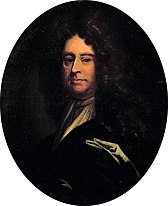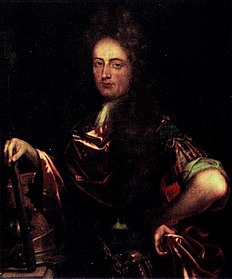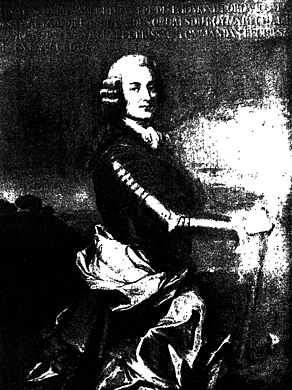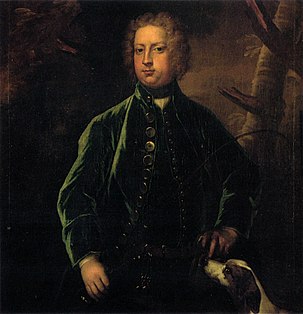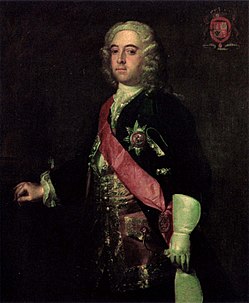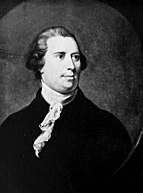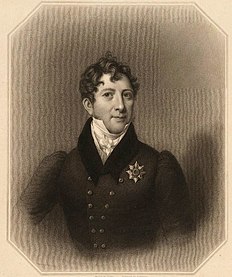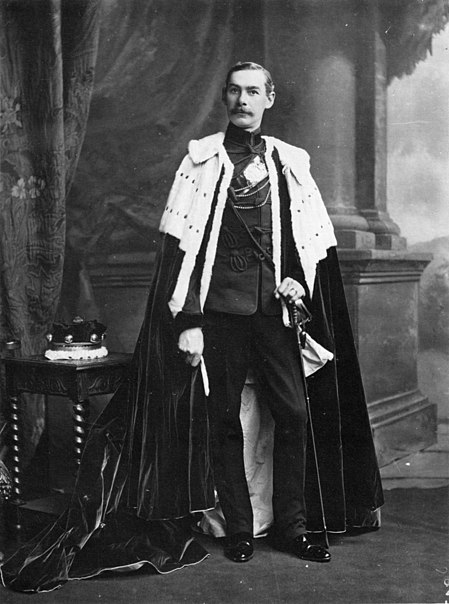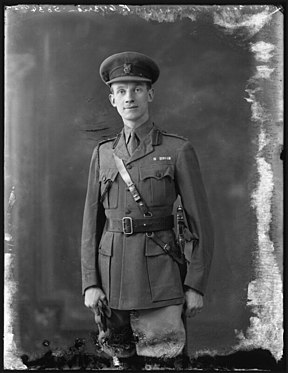O'Brien dynasty
This article needs additional citations for verification. (January 2011) |
| O'Brien Ó Briain | |
|---|---|
Kingdom of Thomond | |
| Founder | Brian Boru |
| Final ruler | Murrough O'Brien, King of Thomond |
| Titles |
|
The O'Brien dynasty (
In total, four Ó Briains ruled in Munster, and two held the High Kingship of Ireland (with opposition). After the partition of Munster into Thomond and the MacCarthy Kingdom of Desmond by Tairrdelbach Ua Conchobair in the 12th century, the dynasty would go on to provide around thirty monarchs of Thomond until 1542.
During part of this period in the late 13th century they had a rivalry with the Norman
Throughout the time that the Ó Briains ruled in medieval Ireland, the system of tanistry was used to decide succession, rather than primogeniture used by much of feudal Europe. The system in effect was a dynastic monarchy but family-elected and aristocratic, in the sense that the royal family chose the most suitable male candidate from close paternal relations—roydammna (those of kingly material) rather than the crown automatically passing to the eldest son. This sometimes led to bitter quarrels and in-family warring. Since 1542, as a part of the Peerage of Ireland, the head of the Ó Briain house adopted primogeniture to decide succession of noble titles instead.
Naming conventions
| Male | Daughter | Wife (Long) | Wife (Short) |
|---|---|---|---|
| Ó Briain | Ní Bhriain | Bean Uí Bhriain | Uí Bhriain |
Background
The Ó Brian emerged as chiefs of the
Instead, academic histories generally accept the Dalcassians as being the
The sept split into the Déisi Muman who continued to hold territory in Waterford and Tipperary, while the west Déisi controlled areas either side of the River Shannon.[5] During the 8th century, the latter was further divided into the Déisi Deiscirt and the Déisi Tuaisceart who would become the Dalcassians.[4][6] Prehistoric ancestors of the Déisi Tuisceart and Dál gCais may have been a once prominent Érainn people called the Mairtine.[7]
It was during this century that the tribe annexed to Munster the area today known as
Mathgamain along with his younger brother
Through much of his reign Mathgamain was competing with his Eoghanachta rival Máel Muad mac Brain.[6] Mathgamain was only defeated in the end by a piece of treachery; he believed he was attending a friendly meeting, but was betrayed at Donnubán mac Cathail's house, handed over to his enemies and executed in 976.[9] The crown of Munster was briefly back in the hands of the Eoghanachta for two years until Brian Boru had thoroughly avenged his brother,[10] with the defeat and slaying of Máel Muad in the Battle of Belach Lechta.
Rise of Brian Boru

The following year Brian came to blows with the Norsemen of Limerick at
Following this the Dalcassians came into conflict with those responsible for the death of Mathgamain, the Eoghanachta represented by Donovan and Molloy. A message was sent to Molloy, where Boru's son Murrough would challenge him in single combat; eventually the Battle of Belach Lechta took place where Molloy along with 1200 of his soldiers were slain. Donovan was destroyed together with Aralt, his brother-in-law and Ivar's remaining son, newly elected king of the Danes and Foreigners of Munster, in Donovan's fortress of Cathair Cuan, which Brian razed. With this Brian Boru was now the
Brian's rise did not go unnoticed, however;
A treaty would eventually be reached between Máel Sechnaill and Brian which split the areas of influence in Ireland between them. Brian gained control over a large portion of the island's south including Dublin. The peace didn't last long as Brian used the newly acquired forces of Dublin and Leinster to spearhead an attack against Máel Sechnaill which ended in their defeat and forced Brian to reconsider pressing any further North.[citation needed]
The war dragged on but Brian would eventually force Máel Sechnaill to accept his authority when northern branch of the Uí Néill clan refused to support him. Despite his fall in position Máel Sechnaill would become one of Brian's most important allies. Eventually the northern Uí Néill branch would accept Brian's rule as well, unusually for the time this was done peacefully, their submission to Brian was negotiated by the clergy rather than forced in battle.
With the most powerful Kings in Ireland now accepting Brian as the High King it was a much easier task for Brian to force the remaining Kings to submit to his rule and though it may have been tenuous he eventually was acknowledged as High King by all the rulers in Ireland.[12]
O'Brien dynasty
Brian's descendants, the Ua Briain provided a further three
In 1543
Family tree
Key:
 = King of Dál gCais
= King of Dál gCais- King of Thomond
 = Baron Inchiquin
= Baron Inchiquin =Viscount Clare
=Viscount Clare- Earl of Inchiquin
- Marquess of Thomond
| O'Brien Dynasty | |||||||||||||||||||||||||||||||||||||||||||||||||||||||||||||||||||||||||||||||||||||||||||||||||||||||||||||||||||||||||||||||||||||||||||||||||||||||||||||||||||||||||||||||||||||||||||||||||||||||||||||||||||||||||||||||||||||||||||||||||||||||||||||||||||||||||||||||||||||||||||||||||||||||||||||||||||||||||||||||||||||||||||||||||||||||||||||||||||||||||||||||||||||||||||||||||||||||||||||||||||||||||||||||||||||||||||||||||||||||||||||||||||||||||||||||||||||||||||||||||||||||||||||||||||||||||||||||||||||||||||||||||||||||||||||||||||||||||||||||||||||||||||||||||||||||||||||||||||||||||||||||||||||||||||||||||||||||||||||||||||||||||||||||||||||||||||||||||||||||||||||||||||||||||||||||||||||||||||||||||||||||||||||||||||||||||||||||||||||||||||||||||||||||||||||||||||||||||||||||||||||||||||||||||||||||||||||||||||||||||||||||||||||||||||||||||||||||||||||||||||||||||||||||||||||||||||||||||||||||||||||||||||||||||||||||||||||||||||||||||||||||||||||||||||||||||||||||||||||||
|---|---|---|---|---|---|---|---|---|---|---|---|---|---|---|---|---|---|---|---|---|---|---|---|---|---|---|---|---|---|---|---|---|---|---|---|---|---|---|---|---|---|---|---|---|---|---|---|---|---|---|---|---|---|---|---|---|---|---|---|---|---|---|---|---|---|---|---|---|---|---|---|---|---|---|---|---|---|---|---|---|---|---|---|---|---|---|---|---|---|---|---|---|---|---|---|---|---|---|---|---|---|---|---|---|---|---|---|---|---|---|---|---|---|---|---|---|---|---|---|---|---|---|---|---|---|---|---|---|---|---|---|---|---|---|---|---|---|---|---|---|---|---|---|---|---|---|---|---|---|---|---|---|---|---|---|---|---|---|---|---|---|---|---|---|---|---|---|---|---|---|---|---|---|---|---|---|---|---|---|---|---|---|---|---|---|---|---|---|---|---|---|---|---|---|---|---|---|---|---|---|---|---|---|---|---|---|---|---|---|---|---|---|---|---|---|---|---|---|---|---|---|---|---|---|---|---|---|---|---|---|---|---|---|---|---|---|---|---|---|---|---|---|---|---|---|---|---|---|---|---|---|---|---|---|---|---|---|---|---|---|---|---|---|---|---|---|---|---|---|---|---|---|---|---|---|---|---|---|---|---|---|---|---|---|---|---|---|---|---|---|---|---|---|---|---|---|---|---|---|---|---|---|---|---|---|---|---|---|---|---|---|---|---|---|---|---|---|---|---|---|---|---|---|---|---|---|---|---|---|---|---|---|---|---|---|---|---|---|---|---|---|---|---|---|---|---|---|---|---|---|---|---|---|---|---|---|---|---|---|---|---|---|---|---|---|---|---|---|---|---|---|---|---|---|---|---|---|---|---|---|---|---|---|---|---|---|---|---|---|---|---|---|---|---|---|---|---|---|---|---|---|---|---|---|---|---|---|---|---|---|---|---|---|---|---|---|---|---|---|---|---|---|---|---|---|---|---|---|---|---|---|---|---|---|---|---|---|---|---|---|---|---|---|---|---|---|---|---|---|---|---|---|---|---|---|---|---|---|---|---|---|---|---|---|---|---|---|---|---|---|---|---|---|---|---|---|---|---|---|---|---|---|---|---|---|---|---|---|---|---|---|---|---|---|---|---|---|---|---|---|---|---|---|---|---|---|---|---|---|---|---|---|---|---|---|---|---|---|---|---|---|---|---|---|---|---|---|---|---|---|---|---|---|---|---|---|---|---|---|---|---|---|---|---|---|---|---|---|---|---|---|---|---|---|---|---|---|---|---|---|---|---|---|---|---|---|---|---|---|---|---|---|---|---|---|---|---|---|---|---|---|---|---|---|---|---|---|---|---|---|---|---|---|---|---|---|---|---|---|---|---|---|---|---|---|---|---|---|---|---|---|---|---|---|---|---|---|---|---|---|---|---|---|---|---|---|---|---|---|---|---|---|---|---|---|---|---|---|---|---|---|---|---|---|---|---|---|---|---|---|---|---|---|---|---|---|---|---|---|---|---|---|---|---|---|---|---|---|---|---|---|---|---|---|---|---|---|---|---|---|---|---|---|---|---|---|---|---|---|---|---|---|---|---|---|---|---|---|---|---|---|---|---|---|---|---|---|---|---|---|---|---|---|---|---|---|---|---|---|---|---|---|---|---|---|---|---|---|---|---|---|---|---|---|---|---|---|---|---|---|---|---|---|---|---|---|---|---|---|---|---|---|---|---|---|---|---|---|---|---|---|---|---|---|---|---|---|---|---|---|---|---|---|---|---|---|---|---|---|---|---|---|---|---|---|---|---|---|---|---|---|---|---|---|---|---|---|---|---|---|---|---|---|---|---|---|---|---|---|---|---|---|---|---|---|---|---|---|---|---|---|---|---|---|---|---|---|---|---|---|---|---|---|---|---|---|---|---|---|---|---|---|---|---|---|---|---|---|---|---|---|---|---|---|---|---|---|---|---|---|---|---|---|---|---|---|---|---|---|---|---|---|---|---|---|---|---|---|---|---|---|---|---|---|---|---|---|---|---|---|---|---|---|---|---|---|---|---|---|---|---|---|---|---|---|---|---|---|---|---|---|---|---|---|---|---|---|---|---|---|---|---|---|---|---|---|---|---|---|---|---|---|---|---|---|---|---|---|---|---|---|---|---|---|---|---|---|---|---|---|---|---|---|---|---|---|---|---|---|---|---|---|---|---|---|---|---|---|---|---|---|---|---|---|---|---|---|---|---|---|---|---|---|---|---|---|---|---|---|---|---|---|---|---|---|---|---|---|---|
| |||||||||||||||||||||||||||||||||||||||||||||||||||||||||||||||||||||||||||||||||||||||||||||||||||||||||||||||||||||||||||||||||||||||||||||||||||||||||||||||||||||||||||||||||||||||||||||||||||||||||||||||||||||||||||||||||||||||||||||||||||||||||||||||||||||||||||||||||||||||||||||||||||||||||||||||||||||||||||||||||||||||||||||||||||||||||||||||||||||||||||||||||||||||||||||||||||||||||||||||||||||||||||||||||||||||||||||||||||||||||||||||||||||||||||||||||||||||||||||||||||||||||||||||||||||||||||||||||||||||||||||||||||||||||||||||||||||||||||||||||||||||||||||||||||||||||||||||||||||||||||||||||||||||||||||||||||||||||||||||||||||||||||||||||||||||||||||||||||||||||||||||||||||||||||||||||||||||||||||||||||||||||||||||||||||||||||||||||||||||||||||||||||||||||||||||||||||||||||||||||||||||||||||||||||||||||||||||||||||||||||||||||||||||||||||||||||||||||||||||||||||||||||||||||||||||||||||||||||||||||||||||||||||||||||||||||||||||||||||||||||||||||||||||||||||||||||||||||||||||
Notes
See also
- Irish nobility
- Irish royal families
- List of people named O'Brien
- Pre-Norman invasion Irish Celtic kinship groups, from whom many of the modern Irish surnames came from
References
Footnotes
- ISBN 978-1-900934-09-1.
- ISBN 0899503624.
- ^ a b O'Dugan, The Kings of the Race of Eibhear, 9.
- ^ a b c d e f Duffy, Medieval Ireland, 121.
- ^ a b Fitzpatrick, Royal Inauguration in Gaelic Ireland C. 1100-1600, 36.
- ^ a b c Koch, Celtic Culture, 554.
- ^ Dáibhí Ó Cróinín, "Ireland, 400-800", in Dáibhí Ó Cróinín (ed.), A New History of Ireland (Volume 1): Prehistoric and Early Ireland. Oxford University Press. 2005. p. 222
- ^ a b c Frances Cusack, Ireland, 294.
- ^ Corbishley, The Young Oxford History of Britain & Ireland, 82.
- ^ Lydon, The Making of Ireland, 31.
- ^ Fitzroy Foster, The Oxford History of Ireland, 37.
- ^ Bryne, Irish Kings and High Kings,
- ^ The Normans in Thomond, Joe Power http://www.clarelibrary.ie/eolas/coclare/history/norman.htm Archived 25 January 2019 at the Wayback Machine
Bibliography
- Cusack, Mary Frances (1868). Ireland. Plain Label Books. ISBN 1-60303-630-X.
- Corbishley, Mike (1998). The Young Oxford History of Britain & Ireland. Oxford University Press. ISBN 0-19-910466-2.
- Laffan, Thomas (1911). Tipperary Families : Being The Hearth Money Records for 1665-1667. James Duffy & Co.
- Lydon, James F (1998). The Making of Ireland. Routledge. ISBN 0-415-01348-8.
- O'Dugan, John (1999). The Kings of the Race of Eibhear. Gryfons Publishers & Distributors. ISBN 0-9654220-6-2.
- Fitzroy Foster, Robert (2001). The Oxford History of Ireland. Oxford University Press. ISBN 0-19-280202-X.
- Fitzpatrick, Elizabeth (2004). Royal Inauguration in Gaelic Ireland C. 1100-1600. Boydell Press. ISBN 1-84383-090-6.
- Duffy, Seán (2005). Medieval Ireland. CRC Press. ISBN 0-415-94052-4.
- Koch, John T (2006). Celtic Culture. ABC-CLIO. ISBN 1-85109-440-7.
- Bryne, FJ (2001). Irish Kings and High Kings. Four Courts Press. ISBN 1-85182-196-1.







